The Services of Wildlife Services
USDA’s Wildlife Services is Low-Hanging Fruit for Blinder-Wearing Ideologues
Captive Mexican Wolf at the Wolf Conservation Center in New York State. Without Wildlife Services, Mexican wolf recovery could not have happened. Photo courtesy of Wolf Conservation Center
By Ted Williams
No agency gets more bad press than Wildlife Services, part of USDA’s Plant and Animal Health Inspection Service (APHIS). And no agency provides a fatter fund-raising piñata for the environmental community. I know because I am part of the environmental community. For my entire adult life, I have written exclusively and full-time about fish and wildlife conservation.
I wish the media, especially environmental media, would muster the courage and integrity to tell the whole story about Wildlife Services. Publications don’t lose readers by angering them with facts they don’t like but need to know. They lose readers by boring them with repetitious pablum.
One need not read past the title of a piece in Harper’s before being instructed that Wildlife Services is a “rogue agency…that tortures dogs and kills endangered species.” According to the Western Watersheds Project, Wildlife Services “persists mainly due to secrecy.” The Center for Biological Diversity dismisses all Wildlife Services work as “taxpayer-funded slaughter of America’s wildlife.” WildEarth Guardians demands that Congress “defund this rogue bureaucracy.” Such slovenly, warts-only reporting is about the only fare available to the public. It serves neither readers nor wildlife.
Warts and All
Virtually all criticism of Wildlife Services is centered around predator control in the West. The agency does two types of western predator control -- “corrective” (when, say, a sheep-killing coyote is taken out) and “preventive” (when coyotes are taken out simply because they might kill sheep).
I object to preventive control of any predator. Ranchers can protect livestock far more effectively with guard dogs, motion-activated strobe lights, hazing, proper fencing and fence flagging. Eliminating free-ranging predators on public lands to protect private livestock is as much a fool’s errand as perpetually bailing a boat instead of plugging the leaks.
Not only is preventive predator control ineffective, it tends to be counterproductive. Dr. Robert Crabtree is the nation’s leading researcher on coyotes (the species most targeted by Wildlife Services). He found that virtually all coyote “control” results in more, not fewer, coyotes. Reduction is possible only if 70 percent of a population is killed, something Crabtree notes “rarely if ever” happens. In populations unmolested by humans the average litter size at birth is five or six. But competition in summer reduces pup survival to 1.5 to 2.5. So when humans kill coyotes, reduced competition results in higher survival.
_________________
Not only is preventive predator control ineffective, it tends to be counterproductive.
_________________
And Crabtree has determined that because coyote “control” reduces the number of adults able to feed young, coyotes tend to abandon their normal diet of rabbits and rodents, turning instead to larger prey like livestock, antelope, and deer.
Finally, indiscriminate killing of free-ranging predators disrupts age structures and territorial defenses so that younger, inexperienced animals that haven’t learned about dangers associated with human settlements and are therefore more likely to cause trouble, move into range emptied of older, experienced predators.
Herewith, the other side of the story:
Non-lethal Control
There’s scant reporting on Wildlife Service’s non-lethal predator control. A few examples:
A vulture effigy hung by Wildlife Services to vacate a roost. Photo courtesy of Wildlife Services
The agency discourages raven predation of endangered least terns by injecting ipecac into quail eggs and placing them in least tern nests. When ravens predate the nests, they eat the quail eggs, too, then spend the day vomiting. Ravens are smart. They learn quickly to avoid least tern nests.
Vultures roost on buildings and trees, fouling property and imperiling human health. Wildlife Services has learned that hanging a single vulture effigy near the roost (a mount, carcass or artificial likeness) causes abandonment in under a week.
As part of a long-term study to devise methods of protecting livestock from wolves, black bears, mountain lions and coyotes, Wildlife Services provides cattle and sheep ranchers with Kangal guard dogs.
Wildlife Services provides livestock growers with Kangal guard dogs. Photo courtesy of Wildlife Services
Mexican Wolves
The Mexican wolf, native to Mexico and America’s Southwest, is the most genetically distinct, rarest and smallest subspecies of gray wolf. They are barely bigger than eastern coyotes. Humans poisoned, shot and trapped them until only seven remained on the planet.
_________________
Because of captive breeding, release of adults, and cross-fostering (placing captive-bred pups in dens to be raised by surrogate parents), there are now 286 wild lobos in Arizona and New Mexico. An additional 350 animals are maintained in captivity.
_________________
But in 1976 the Mexican wolf (AKA “lobo”) was listed as endangered, and an ambitious recovery program got underway. Because of captive breeding, release of adults, and cross-fostering (placing captive-bred pups in dens to be raised by surrogate parents), there are now 286 wild lobos in Arizona and New Mexico. An additional 350 animals are maintained in captivity. For each of the past nine years, the wild population has increased.
None of this could have happened without Wildlife Services. It captures lobos for radio-collaring and release. It monitors free-ranging lobos. It implements non-lethal measures that dissuade lobos from killing livestock. These include installing electric fences, placing colored flagging around non-electric fences, hazing, shooting offenders with rubber bullets, and installing motion-activated strobe lights. In areas where depredations have occurred, Wildlife Services provides lobos such alternate food sources as road kills.
A nutria. Photo © Neta Bartal
Nutria
Much of the agency’s lethal control targets nonnative, invasive species that destroy native ecosystems.
Nutria, native to South America, are aquatic rodents resembling small beavers or large muskrats. Late in the 19th century, the fur industry introduced them to North America. This species, it proclaimed, would provide a fur bonanza and, on top of that, control unwanted vegetation.
Failing to distinguish between unwanted and wanted vegetation, nutria chowed down on both. Unlike our native aquatic rodents, they devoured roots and rhizomes, preventing regrowth. They converted marshes to eroding, subsiding mudflats. Their burrows collapsed dikes and levees.
Today, nutria are naturalized in at least 17 U.S. states and parts of Canada, central Asia, Japan and East Africa.
At Blackwater National Wildlife Refuge on Maryland’s eastern shore, nutria, assisted by rising sea level, destroyed 5,000 acres of coastal wetlands.
My son -- Dr. Scott Williams, now chief of environmental science and forestry at the Connecticut Agricultural Experiment Station -- spent the summer of 1997 working at Blackwater as the Youth Conservation Corps leader. Part of his job was shooting nutria. “It was like playing Whack-a-Mole,” he recalls. “During the day I’d see literally hundreds swimming in the flood-control ditches. I remember staff pointing out where saltmarsh used to be.”
Nutria attain sexual maturity in four months and produce litters of 4 to 13 young three times a year. Eradication, even effective control, seemed out of the question in 1997.
Still, a broad partnership -- the U.S. Fish and Wildlife Service, Wildlife Services, resource agencies of Maryland, Delaware and Virginia, and landowners including The Nature Conservancy -- set about devising a strategy for eliminating nutria from the Chesapeake.
Finally, in 2002, with U.S. Fish and Wildlife Service funding, the partners hired Wildlife Services.
Thanks to Wildlife Services, nutria eradication has been achieved -- not only at Blackwater but throughout the entire Delmarva Peninsula from Maryland to Delaware to Virginia.
The 23-year, $30 million effort is among the most spectacular success stories in the history of wildlife management.
“It’s absolutely amazing how effective the program has been,” declares Matt Whitbeck, supervisory wildlife biologist for the Chesapeake Marshlands National Wildlife Refuge Complex.
Marsh recovery has been swift. This from Jonathan McKnight, Associate Director of the Wildlife and Heritage Service for the Maryland Department of Natural Resources: “The really great news is that the plants that were originally there came back. When we saw all that damage, we thought, ‘Oh my God, this is going to fill up with phragmites.’ But if you get nutria in time, the native seed bank -- typically three-square grass -- is still there.”
_________________
Thanks to Wildlife Services, nutria eradication has been achieved -- not only at Blackwater but throughout the entire Delmarva Peninsula from Maryland to Delaware to Virginia.
_________________
Among Wildlife Services’ more successful innovations are nutria-sniffing dogs. They were important in the early phases of nutria eradication and are essential in ongoing monitoring.
“In the beginning we had a high density of nutria,” says Wildlife Services biologist Marnie Pepper who led Chesapeake nutria eradication after 2014. “You went into the marsh and that was the animal you were most likely to encounter. Folks on the project started bringing their hunting dogs; and they were able to train them pretty quickly. But when the dogs couldn’t find any more nutria there were no training opportunities. So we started training dogs to find nutria scat. Scat was something we could keep in freezers and carry with us. We partnered with the National Detector Dog Training Center, an APHIS program out of Newnan, Georgia. The trainer we worked with had done projects with the Fish and Wildlife Service, which uses dogs to detect wildlife contraband.”
I asked Wildlife Services’ Steve Kendrot, who led nutria eradication from 2002 to 2014, about early challenges. “The big one,” he said, “was assuring that private lands were accessible to us and didn’t serve as nutria refuges. I spent lots of time knocking on doors and running through project specifics with landowners at their kitchen tables. It was a monumental task. You can’t overstate the importance of local landowner cooperation; we would never have been able to achieve success without that support. At first, there was some hesitance to embrace the federal government. But once we got some influential landowners signed on, most of the reluctant folks came along. On the few parcels we couldn’t access we were able to trap the periphery and get the animals off.”
Nutria and other destructive nonnatives benefit from Wildlife Service’s unpopularity. Nowhere in the nation has the agency been more savagely assailed than in California. But now that nutria are ravaging wetlands in the San Joaquin Valley, the desperate state has turned to Wildlife Services for help.
Black-footed Ferrets. Photo courtesy of Nebraska Game and Parks Commission
“Sadly,” charges the Center for Biological Diversity without offering a shred of evidence, “[black-footed] ferrets are also among the species inadvertently killed by the USDA’s Wildlife Services program, which we’re working hard to rein in.”
The Center declines to report the real news about what Wildlife Services does for, not to, critically endangered black-footed ferrets, a species long declared extinct but rediscovered September 26, 1981 near Meeteetse, Wyoming by a ranch dog named Shep who delivered a carcass to his owner.
Wildlife Services, a partner in the black-footed ferret recovery program, helps maintain and restore the species by: 1. managing sylvatic plague, a major threat to both black-footed ferrets and their prime food source, prairie dogs; 2. monitoring reintroduced ferret populations; 3. providing financial and technical assistance to landowners to conserve ferret habitat.
Among the corrective predator-control victims on the list of animals killed by Wildlife Services, endlessly publicized by the Center for Biological Diversity and other enviro outfits, are the specific badgers and coyotes that prey on black-footed ferrets.
Foxes
Wildlife Services gets beaten up for killing nonnative red foxes (overpopulated because of garbage left by beachgoers) that prey on eggs and hatchlings of native, endangered shorebirds and dig up and devour eggs of native, endangered sea turtles.
In the Aleutian Islands, nonnative Arctic foxes that escaped from fur farms had decimated critically endangered cackling geese, reducing the population to under 1,000. After Wildlife Services eradicated the foxes, cackling geese proliferated to the point that, in 2001, they were delisted.
Wildlife Services explosives specialist prepares binary explosives for beaver dam removal on a beaver-compromised, low-gradient brook trout stream in northern Wisconsin. Photo courtesy of Wisconsin DNR.
Beavers
Beavers are like red wine. If one glass a day is good for your heart, it doesn’t follow that 50 a day are 50 times better, or better at all.
Beavers in natural abundance benefit the native ecosystems of which they are part. In the Pacific Northwest, where beavers are still recovering from 19th-century trapping, they’re being transplanted to create reservoirs of cool water for young trout and salmon.
But in the Midwest and Nevada beavers are grotesquely overpopulated because humans have removed most wolves (their main predators) and clearcut stream banks, converting old growth to such beaver candy as willow and aspen.
As a result, entire coldwater ecosystems are now warm, muddy dead waters. Brook trout, just one of hundreds of species dependent on cold, free-flowing streams, are being wiped out.
When I asked fisheries biologist Scott Braden of the Wisconsin Fish, Wildlife and Parks Division for examples, he offered Beaver Creek and Buckhorn Springs. “They were really beaten up by beavers,” he said. “There was some brook trout reproduction in the headwaters. But trout couldn’t get downstream. They were basically gone. All that was left were dark, sedimented backwater sloughs full of lily pads. It was just terrible. We were walking through chest-deep muck. It really gave you an idea of how much damage overpopulated beavers do.”
_________________
Beavers are like red wine. If one glass a day is good for your heart, it doesn’t follow that 50 a day are 50 times better, or better at all.
_________________
Wisconsin and Minnesota hire Wildlife Services to take out beavers and their dams. It’s expensive, so only a tiny percentage of coldwater habitat can be restored.
But results are spectacular. “After Wildlife Services trapped beavers and removed dams,” Branden continued, “that cold water started rushing downstream and scoured out all that muck and debris, making lots of habitat. Within two years there were just thousands of brook trout throughout the system.”
These are facts that ecologically challenged and Wildlife Services-hating beaver lovers don’t want to know. They threw a hissy fit about my reporting on overpopulated beavers in American Angler magazine.
A beaver lover’s group called “Worth a Dam” scolded me as follows: “Maybe you could spend five minutes in an actual trout stream with an actual beaver dam.” (If the time I’ve spent in such streams were added up, the sum would be more like five years.) And then this brazen untruth: “The Wisconsin DNR studies have shown that beaver dams do not inhibit trout movement and they do not negatively effect [sic] watershed stream temperatures.”
Beaversprite magazine ran screeds about the piece from contributors convinced that if beavers are good somewhere and in some quantity, they’re good everywhere in all quantities. One alleged authority proclaimed that any and all recovery of coldwater ecosystems by Wildlife Services is for the single purpose of making “it easier for duffers to fill their creels.”
Rhesus Macaques
Desecheo National Wildlife Refuge, a 358-acre island 13 miles west of Puerto Rico, was one of the Caribbean’s most prolific seabird rookeries until black rats, feral goats, feral house cats and feral rhesus macaque monkeys arrived.
In addition to eliminating most seabirds, these nonnative, invasive species blighted forests, killed the federally threatened Higo Chumbo cactus, and reduced native land birds, reptiles and invertebrates to a shadow of their former abundance.
Even with goats (introduced in 1788 ), rats (introduced circa 1900 ) and cats (date of introduction unknown), a few seabirds managed to hang on.
Eventually, goats, rats and cats were eradicated. What finally finished off seabirds were the monkeys, unleashed in 1966 for medical research by the then clueless National Institutes of Health.
So the U.S. Fish and Wildlife Service hired Wildlife Services, which -- partnered with the non-profit groups Island Conservation and White Buffalo -- finally eradicated monkeys in July 2017.
_________________
What finally finished off seabirds were the monkeys, unleashed in 1966 for medical research by the then clueless National Institutes of Health.
_________________
Today the refuge is again a thriving seabird rookery, pumping out bridled terns, sooty terns, brown boobies, red-footed boobies, magnificent frigatebirds, brown noddies, laughing gulls, and probably white-tailed tropicbirds.
Black Rat. Photo courtesy of British Wildlife Centre
Rats
The Center for Biological Diversity’s claim that all Wildlife Services projects are “taxpayer-funded slaughter of America’s wildlife” is correct -- provided you count nonnative, invasive rats that nuke native ecosystems as “America’s wildlife.”
Wildlife Services has restored imperiled seabirds and plants on many ocean islands by poisoning off rats.
For example, in 1995 the U.S. Fish and Wildlife Service hired the agency to eradicate the black rats, inadvertently introduced by the Navy during World War II to Midway Atoll, now a national wildlife refuge.
The rats had devastated native plants and such seabirds as the Bonin petrel. Before the rat infestation, the atoll sustained an estimated half million Bonin petrels. By the 1980s rats had knocked the population down to around 5,000.
_________________
The Center for Biological Diversity’s claim that all Wildlife Services projects are “taxpayer-funded slaughter of America’s wildlife” is correct -- provided you count nonnative, invasive rats that nuke native ecosystems as “America’s wildlife.”
_________________
Thanks to Wildlife Services, the refuge has been rat-free since 1996. Native plants have surged back, seabirds are doing much better (though they still have to deal with invasive “zombie mice”), and Bonin petrels are essentially recovered.
Wildlife Services plans to eradicate the nonnative, invasive Norway rats ravaging seabirds on the Aleutian Islands of Amchitka, Attu, Great Sitkin, and Kiska. These and similar projects can’t happen if, as WildEarth Guardians urges, Congress “defunds this rogue bureaucracy.”
If, like me, you don’t like some of the things Wildlife Services does, you’re wasting your time and energy by attacking the agency. Instead, attack the agency’s mandated mission by enlisting your legislators to make the USDA change it. Demand more emphasis on corrective predator control, non-lethal predator control, and eradication of nonnative, invasive species.
Ted Williams writes rare books as well as articles for low-paying publications.




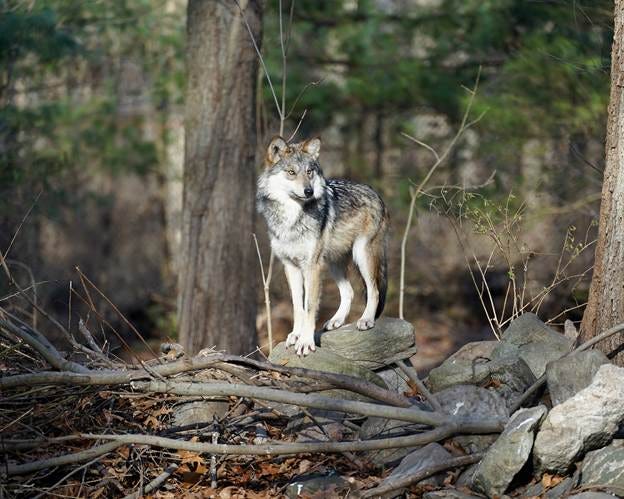
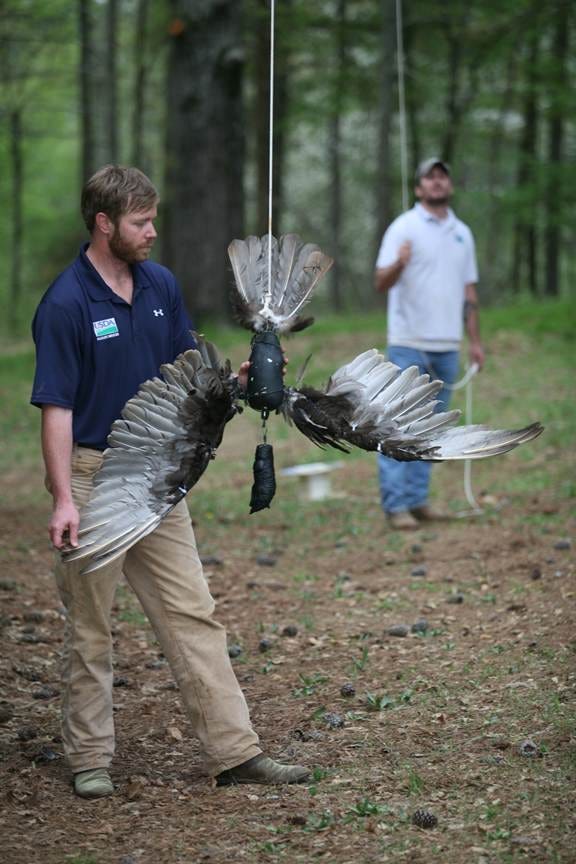
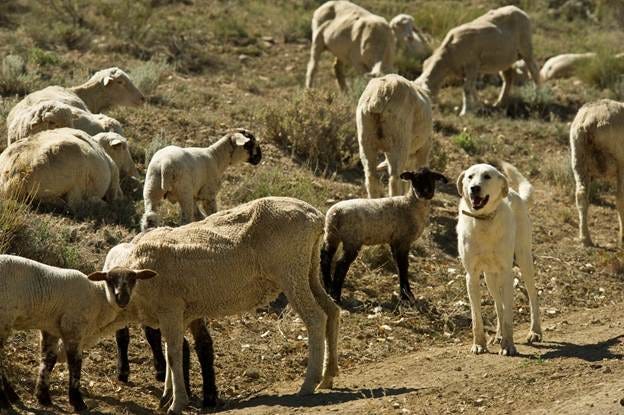
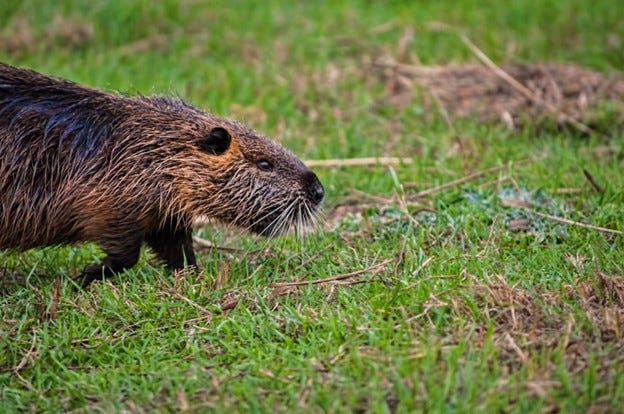
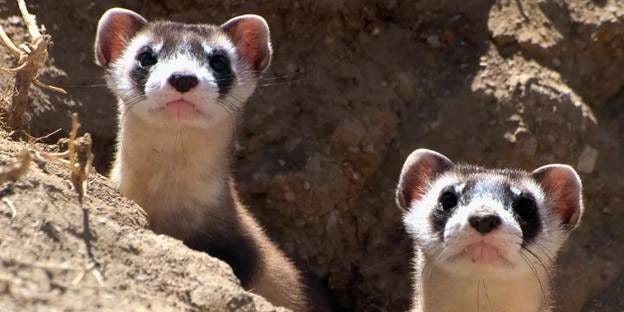
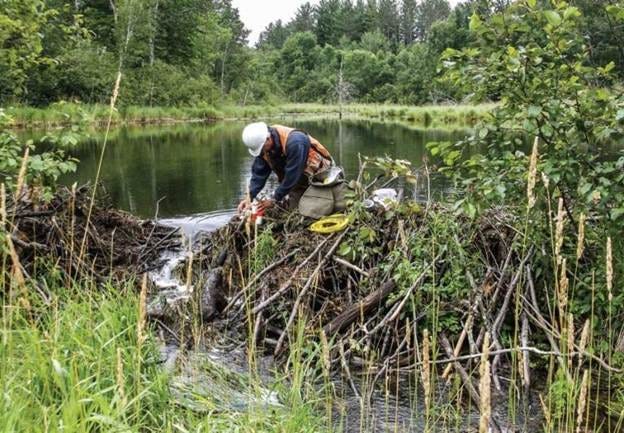

Superb piece! Thank you for presenting facts.
Great post. This story needs to be old and highlighted !